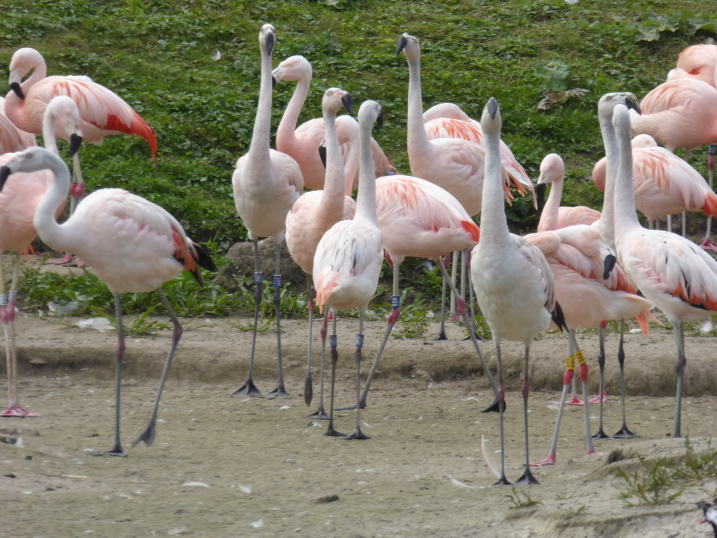Learning more about our foster chicks
What did this summer's research project on our wonderful fostered Chilean flamingos tell us? That they are settling into their new home and have made some new friends!
It’s been several months now since the fostered Chilean flamingo chicks moved into their new home, the South American Pen at WWT Slimbridge. MSc Animal Behaviour student Peter from the University of Exeter spent the summer following these special birds to see exactly what they were up to. Peter was interested in how they would grow and develop and “become a flamingo” in the same way as the parent-reared birds would. By taking photos of the group, and observing the foster chicks (thanks to their brightly-coloured leg rings) Peter has been able to draw a social network of the bird’s friendships and relationships with others around them.
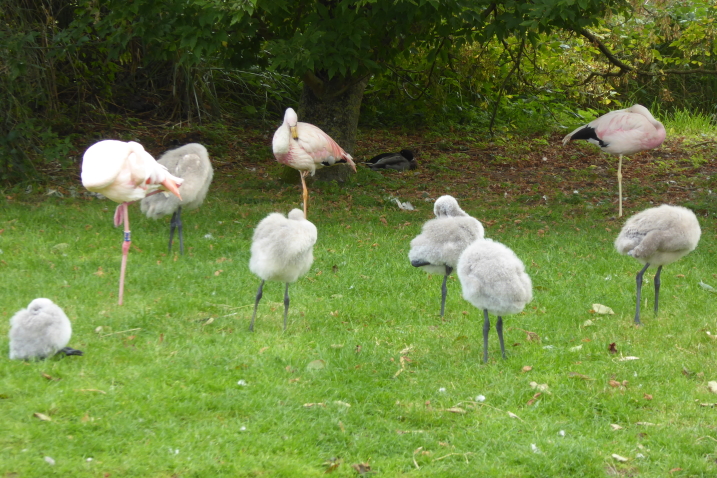
Fluffy bundles back in the summer of 2018 in the Andean flamingo pen. The foster chicks are now living in a much bigger group!
Why did we do this?
The nesting activity of the Andean flamingos in summer 2018 was an unusual event that required some different ways of managing the birds. To give the Andean flamingos a real experience of raising youngsters from nest building to fledging, the excess of Chilean flamingo eggs laid that year were given to the Andeans. This has provided WWT Slimbridge with a unique population of fostered chicks that were raised by a different species of flamingo, and because we know that flamingos live for a long time, we want to follow this chicks throughout their lives and understand how they grow up and what relationships they will form with other birds.
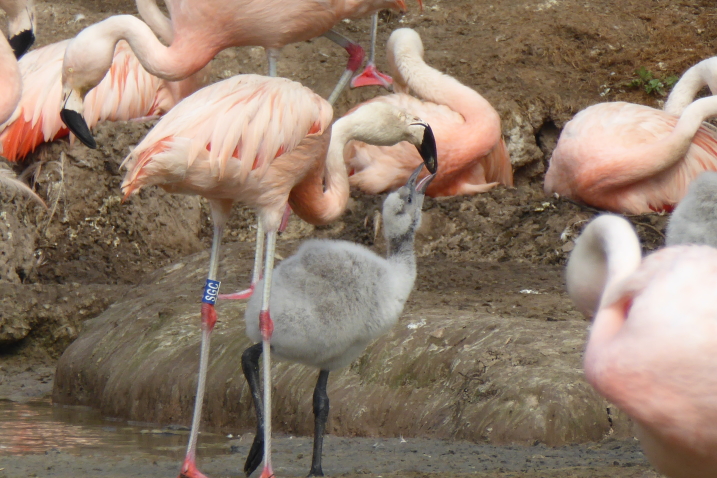
A parent Chilean flamingo feed it chick. These parent-reared youngsters from 2018 are the "room-mates" of the fostered chicks. Do they get on? And do they behave in the same way?
What did we find out?
Peter’s research has revealed an interesting picture of how this flock lives. The foster chicks integrated well with the parent-reared chicks within the flock, and they also maintained some stronger bonds with adult birds too. Like flamingo chicks in the wild, both the fostered and parent-reared chicks were likely to be found on the edge of the main flock, “left out” of what was going on from the adult birds. As the youngsters turn pinker and develop adult colours, this situation will change. Peter found that these preferred associations were stable and month-by-month, the birds were continuing to hang around with the same original friends that they had at the start of the study. Some of the connection they have are also with each other. We have seen this before too- for example, when new lesser flamingos were introduced into the flock back in the autumn of 2014 it took several years before they started spending a lot of their time with birds in the original group. Flamingos seem to like to know who their friends are before they start to form new relationships. You can read all about the arrival of these new lesser flamingos and the study their developing friendships in past blogs.
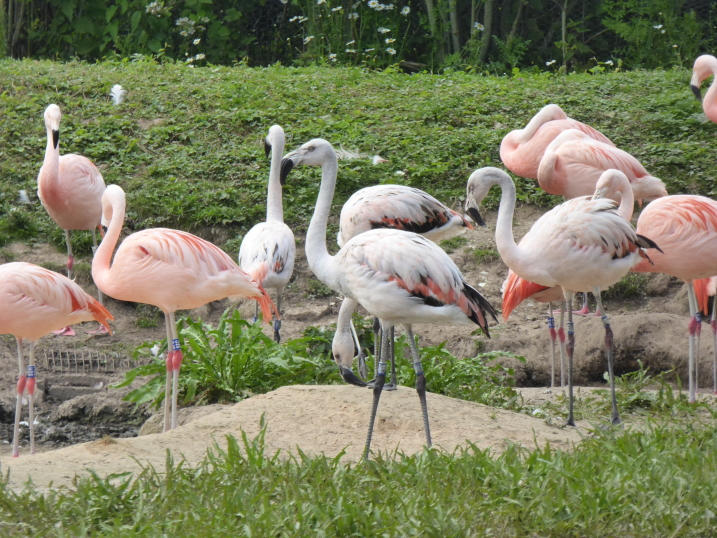
Looking all grown up with a sprouting of beautiful red and pink feathers.
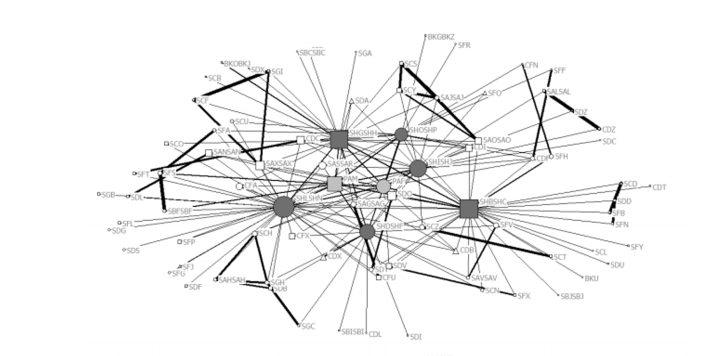
The network that Peter created of the fostered chicks in the main Chilean flamingo flock. Foster chicks are the large, dark grey squares and circles in the middle of the network. You can see the friendships that they hold with other birds.
Where do we go next?
As the flamingos age, and turn pinker, their characters will develop and they show their own personality. We have looked into personality differences before in our flamingos but never from such a young age. Personality tells us lots about what each bird likes and dislikes, and how and why some birds form relationships together. A past MSc student, Finn, noted that birds of a similar personality type were more likely to be "best friends" with each other. As these foster chicks age, we can see why they choose to pair up or associate with the others in the flock. Do they do things differently because of their experiences as a chick, or will they simply act the same as the other Chilean flamingos in the group?
Peter's research has shown us that the foster chicks are happy and contented in their new flock. They perform the same behaviours as the other youngsters in the group and have managed to find a place in this much larger group of birds. Check them out in the photo below starting their first practices of courtship display (head-flagging) with the other youngsters in the group :-)
